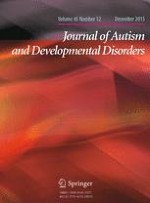24-07-2015 | Original Paper
Violations of Personal Space in Young People with Autism Spectrum Disorders and Williams Syndrome: Insights from the Social Responsiveness Scale
Gepubliceerd in: Journal of Autism and Developmental Disorders | Uitgave 12/2015
Log in om toegang te krijgenAbstract
Interpersonal distance regulation is crucial for successful social interactions. We investigated personal space awareness in Williams syndrome (WS) and autism spectrum disorder (ASD) compared to typical development. Parents reported that individuals with WS and ASD were significantly more likely than those developing typically to invade the personal space of others. WS individuals were reported to have the least awareness of the personal space boundaries of others. Despite the suggested opposing social profiles of WS and ASD, some similarities are present in the ability, or indeed inability, to regulate interpersonal distance during social interactions. Findings are discussed in relation to implications of atypical amygdala function, inhibitory control and anxiety on real-world behaviour for such socially vulnerable groups.
